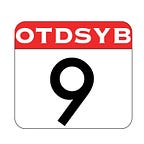Governor Sir William Phips Ends the Salem Witch Trials
So, you’re a governor in Colonial America, and you lead a months-long expedition into the frontier to build forts and outposts. Then, when you finally get to go home, you get there, and hysteria has taken over everyone and it’s the Salem Witch Trials. What a horrible mess to have to clean up.
Today is October 12, 2017, and on this date, 325 years back, in 1692, Governor Sir William Phips issued a declaration effectively ending the Salem Witch Trials.
The episode we think of as The Salem Witch Trials began in February of 1692, when two young girls, Betty Parris and her cousin Abigail Williams began to have strange fits of an indeterminate cause. Soon, other young women also became affected.
Initially three arrests were made, based on accusations made by the affected girls, and the Trials were underway. Sarah Good, a local beggar, was accused because the Puritans of the area could not stand to see such a wretch of a person in their midst. Sarah Osborne, who was scarcely active in church proceedings, was likewise accused based on prejudgments and her reputation. Lastly, Tituba, who was both a slave and a Native American, was targeted due to her being an outsider and a heathen.
The first three accusations set the norm for what was to come in the following months. Women, typically outsiders, outcasts, or those in poor standing in the church or community were the most likely to be targeted with witchcraft accusations.
Initially, local magistrates handled all of the interrogations and trials, and in the following months more accusations were made.
By May 27, things had spiraled so out of control that Massachusetts Governor Sir William Phips mandated a new means of trying the accused. A Special Court of Oyer and Terminer was setup to handle the matter. When the court, headed by Lieutenant Governor William Stoughton, first convened, there were 62 people in custody awaiting their trial. Sarah Good, one of the first three women accused, had already died in prison.
The first guilty verdict the Court rendered was based on the defendant’s immoral lifestyle and the fact that her coat was torn in two places. The convicted woman, Bridget Bishop, was hanged the following week.
By the end of September, the death-toll had reached twenty, either by execution, imprisonment, or torture, and the Court showed no signs of slowing down.
Governor Sir William Phips, who had been largely absent during the Trials, on expedition into Maine to build forts, returned to the area on September 29, and learned that even his own wife had been accused of witchcraft.
On October 12, he drafted a letter shutting down the Special Court, and ending the Salem Witch Trials.
Thanks for reading, and be sure to check back tomorrow for The Miracle of the Sun.
Creating quality content on a daily schedule requires a massive commitment, and my desire is to not only do that, but expand into even more mediums (audio podcasts, web videos, etc.). If you enjoy these posts, or would like for them to be available in other formats, please consider supporting me on Patreon. Just $1 a month will help a ton, as well as get you access to exclusive content. Thanks.
